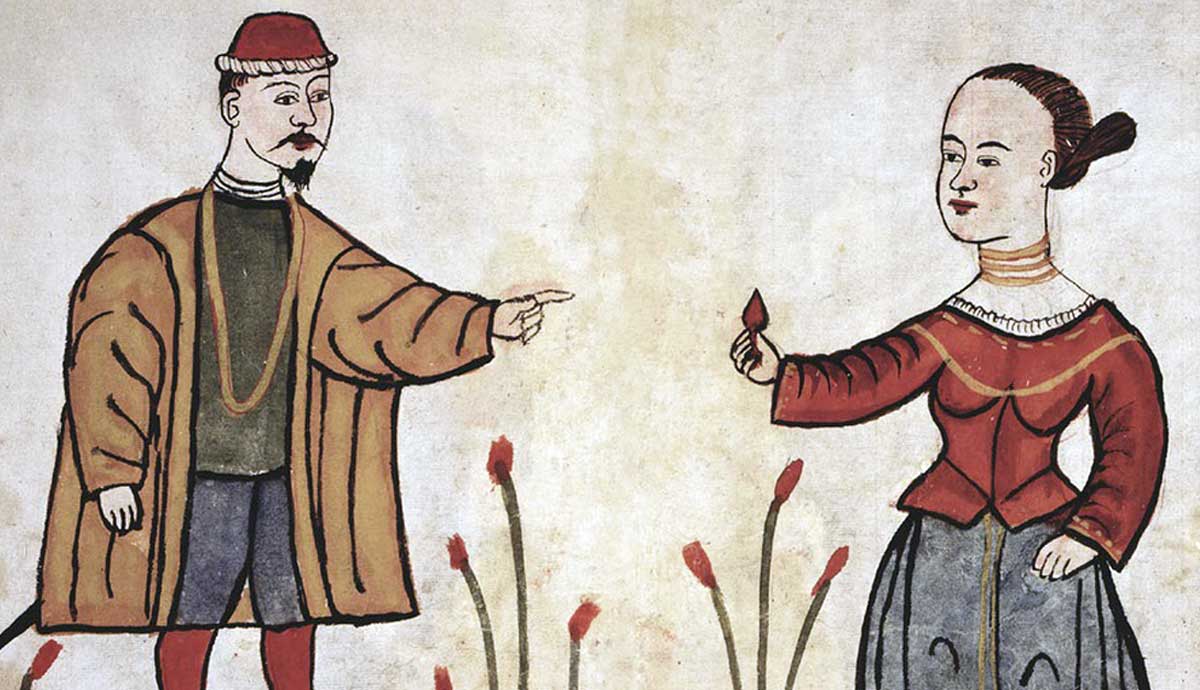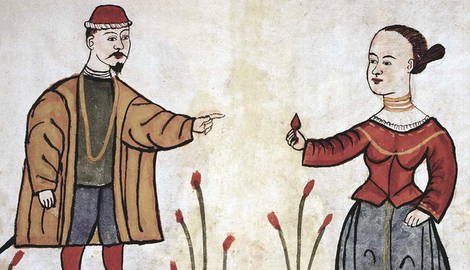
Portugal’s maritime voyages in the 15th and 16th centuries initiated significant commercial and cultural exchanges between Europe and Asia. Similar to the Spanish encounters in the Americas, Portuguese chroniclers meticulously documented and mapped vast territories in Africa and Asia. In 1498, Vasco da Gama famously arrived in Calicut and started a trade route from Portugal to India. In 1513, Jorge Álvares made first contact with the Chinese, a lesser-known event that nevertheless marked the start of one of the first diplomatic interactions between China and the West.
The First Sino-Portuguese Encounters: A Complex Clash of Customs

Following Vasco de Gama’s ventures in India, which greatly boosted Portuguese trade through newfound access to the spice routes, the Portuguese Empire kept expanding its territories. In 1511, the conquest of Malacca opened the doors to East Asia and its precious mercantile goods.
The expeditions continued to China, where Álvares first approached the Chinese in the port city of Guangzhou in May 1513. The earliest written account of these encounters depicted the Chinese as good individuals seeking peace and camaraderie with the Portuguese. However, initial observations also underscored the challenges faced by the Portuguese, as they were barred from entering mainland China due to the local custom of restricting foreign entry into their domains. From a very early stage, even if the prospects for trade were very positive, the severity of Chinese traditions posed a significant obstacle to fostering a flourishing relationship.
Despite Chinese prohibitions, the Portuguese embassy persisted, entering new ports, waving their flags, and firing cannon shots, a customary European naval greeting sign of respect. However, the Chinese interpreted all these actions as hostilities. Additionally, the Portuguese were identified as the pirates who conquered Malacca, a tributary allied kingdom of the Chinese Ming Empire (1368-1644).
These acts led to many debates between Ming authorities on the future of the Portuguese. Many Chinese officials were totally opposed and wanted to declare war on the Portuguese, as they did not align with the required conventions. Other bureaucrats were curious about the future of Sino-Portuguese relations and in favor of trading with them.
Breaking Traditions: Prospects of Global Trade

Among the group inclined to trade with the Portuguese was Emperor Zhengde. Upon learning of the Portuguese actions, he remarked, “These people do not know our customs; gradually they will learn them” (Zhang, 1973). The emperor’s position was a clear sign of hope for commerce to flourish between partners. Even if tradition directly clashed with the stance of the emperor and other officials, curiosity and economic gains forged a path toward a new set of values.
Nevertheless, the end of the Portuguese embassy was close. The death of Emperor Zhengde in 1521 prompted an official order for the Portuguese to cease foreign trade and a demand for departure under penalty of death. At first, they refused to obey the orders, but after many battles, the Portuguese were expelled from China in 1522, and commercial relations were severed for several years to come.
Who was to blame for the misfortunes of the first Sino-Portuguese relations? Were Chinese norms too strict for Westerners to follow? Were the Portuguese actions too ferocious and brutal to channel their expulsion? To gain insight into this matter, it is crucial to understand the political and economic system in place during the Ming dynasty, especially in relation to commerce.
The Ming Empire, long before the Portuguese arrival, was entering a prolonged and much-contested social, political, and cultural debate on behalf of its relations with foreigners. The influence of ancient traditions, particularly Confucianism, along with the economic structures of East Asia, reinforced the anti-foreign discourse. However, the rise of the merchant class, the potential for significant wealth accumulation, and the rapid changes of an expanding world all aligned with the idea of opening trade to unknown and foreign actors.
Diplomacy & Commerce During the Ming Dynasty: An Ancient System

The Ming era represented a period of stability and growth for China, as it continuously built and improved alliances and good relations with the majority of its bordering states and ancient allies. These neighboring countries, such as Japan, Korea, or the region that later became modern Vietnam, are often referred to as Sinicized states, as they were established and evolved based on Chinese cultural values and customs.
All these states were influenced and fundamentally shaped by the Chinese written language, imperial system, and Confucian teachings, all of which originated in China. Therefore, the historical development of East Asia was profoundly conditioned by China’s influence over more than 3,500 years, long before the Ming dynasty. This reality fostered a Sinocentric worldview, culturally isolating China from foreign nations, especially those in the West.
By the 14th century, the Sinicized states had developed a set of institutions and international rules that established an organized socioeconomic structure. A crucial characteristic of this system was that China’s hegemonic position did not primarily derive from political or military power, as was the case in Western states. Instead, it stemmed mainly from China’s Confucian cultural and social achievements. Any kind of formal mutual agreement between China and Portugal contradicted this system, as it was based on the centrality of Chinese customs.
However, as mentioned, not all Ming officials were opposed to foreign contact. In fact, Zhengde was not the first emperor to welcome international trade. Just one hundred years before the arrival of the Portuguese, the Yongle emperor dispatched seven extensive overseas missions led by the admiral Zheng He. These expeditions were another clear example of how the Ming began to challenge some Chinese customs.
Betraying Cultural Customs for Profit: A New Set of Chinese Values

International trade revenues not only opposed the economic organization of the Sinicized states, but they also posed a serious challenge to Confucian ideals. Confucianism developed in a context of a self-sufficient and small-scale Chinese peasant economy. This fact deeply influenced its teachings, which advocated for an equal distribution of wealth and discouraged the pursuit of material gains.
As Confucius preached: “The mind of the superior man is conversant with righteousness; the mind of the mean man is conversant with gain” (Lau, 1992). Consequently, Confucianism contained a strong philosophical prejudice against merchants, arguing that their motivation was profit rather than righteousness. As a result, in Confucian teachings, merchants were ranked last among the four categories of people, while scholars were put at the top of the social hierarchy in spiritual terms, followed by farmers and artisans. Nevertheless, as time progressed, many Chinese individuals realized that the potential wealth to be gained through commerce was so great that they chose to become merchants, even if, from a social and moral point of view, they were doomed.
The Chinese reality was changing, even before the arrival of the Portuguese. The world was rapidly evolving and the distances that isolated societies and cultures in ancient times were being shortened very fast. A remarkable change was occurring, particularly along China’s southern coast, where the merchant class was rapidly growing. Even if Chinese bureaucrats and Confucians disregarded merchants, ordinary people understood the value of trade and external contact. As the position of Emperor Zhengde exemplified, an adjustment in Confucian meaning was needed for it to accept the new trends set by international commerce.
Adapting to New Times: The Rise of Neo-Confucianism

In the context of the first Sino-Portuguese encounters, a new branch of Confucianism was developing to grasp the transformations of an emerging era. This new Confucianism equated all four social classes (scholars, farmers, artisans, and merchants), giving importance to and truly originating the rise of the merchant class. In this regard, Neo-Confucianism hoped for the social inclusiveness of the merchant class, revitalizing Confucian principles and linking them to major economic transformations.
Wang Yangming, one of the most famous Neo-Confucians, who shared his teachings during the period of the Portuguese encounters, wanted trade to be considered a good practice. In his words: “If you can balance yourself so that neither your mind nor your body becomes weary, then not even engaging in trade all day long will stand in your way of becoming a sage or a worthy” (Chan, 1963).
During the years of Portugal’s arrival in China, a big change in Confucian thought was underway. This development influenced the Chinese cultural identity in dealing with outsiders and possibly shaped the opinions of some actors present in the Sino-Portuguese debates. Traditional customs were slowly adapting to modern times. The emerging Neo-Confucian approach to business and trade embraced globalization, successfully navigating traditional practices to introduce innovative concepts.
When Portugal Met China: Toward the Age of Globalization

Although the Portuguese were officially expelled from China in 1522, their initial encounters established a precedent for China’s integration into the global trade system and marked the beginning of formal diplomatic relations between the Western world and China. The arrival of the Portuguese in Guangzhou in 1513 challenged tradition and prompted the necessity to adapt ancient Chinese customs to new circumstances. The expansion of global trade not only fostered significant political and economic changes but also reshaped social values and cultures.
Moreover, by 1557, Chinese authorities ultimately granted permission for the Portuguese to establish a settlement in Macau, a new trade colony next to Hong Kong. In doing so, Ming officials came to acknowledge the strategic significance of the Portuguese, gradually transitioning from being perceived as foreigners to becoming recognized allies. In a way, Emperor Zhengde’s position ended up formally crystalizing 36 years after his death.
The Age of Discovery is usually linked to the Spanish Conquista of the Americas and the subsequent enslavement of the Indigenous people. However, the Age of Discovery also gave rise to overlooked events, such as the first Sino-Portuguese encounters in the 16th century, which significantly influenced the evolution of global trade and geopolitics. A rediscovery of the Age of Discovery holds the potential to view this period not merely as a tale of conquest but also as a story of adaptation and cultural flourishing.
Further Reading:
Brook, T. (1999). The confusions of pleasure: Commerce and Culture in Ming China. University of California Press.
Brook, T. (2019). Great state: China and the world. Profile Books.
Chan, W. (trans.) (1963). Instructions For Practical Living and Other Neo-Confucian Writings by Wang Yang-Ming. Columbia University Press.
Coppolaro, L., & McKenzie, F. (Eds.). (2013). A global history of trade and conflict since 1500. Springer.
De Sousa, I. C. (2013). China, Portugal and the Portuguese-speaking Countries. East & West.
Gruzinski, S. (2014). The Eagle and the Dragon: Globalization and European dreams of conquest in China and America in the sixteenth century. John Wiley & Sons.
Lam, K. C. J. (2003). “Confucian business ethics and the economy.” Journal of Business Ethics, 43(1).
Lau, D. C. (trans.) (1992). The Analects (Confucius). Chinese University Press.
Mungello, D. E. (2012). The great encounter of China and the West, 1500–1800. Rowman & Littlefield Publishers.
Pérez García, M., & De Sousa, L. (2018). Global history and new polycentric approaches: Europe, Asia and the Americas in a world network system. Springer Nature.
Subrahmanyam, S. (2012). The Portuguese Empire in Asia, 1500-1700: a political and economic history. John Wiley & Sons.
Yü, Y. S. (2021). The Religious Ethic and Mercantile Spirit in Early Modern China. Columbia University Press.
Zhang, T. (1973). Sino-Portuguese Trade from 1514-1644: A Synthesis of Portuguese and Chinese Sources. AMS Press.









